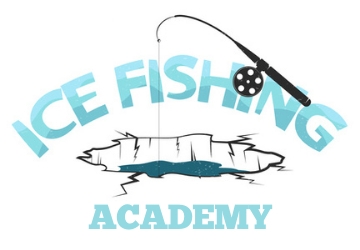Lively minnows are some of the best live ice fishing baits available. While you can use various types of live bait, what is the best way to care for and keep minnows alive for ice fishing?
Minnows should be purchased as close to the fishing date as possible to keep them alive as bait for ice fishing. Precautions, including optimal temperatures and clean water, should be taken to ensure they can safely arrive at fishing spots. An aerated minnow bucket is a preferred transport method.
Fish are attracted to the movement of live bait, minnows for ice fishing should be kept alive up until the point of baiting a hook. Let’s look at how to buy minnows before fishing and care for them until that point.
4 Steps to Care for Ice Fishing Minnows

Keeping minnow alive begins before the minnows are purchased and concludes with correct hooking techniques when you are ready to fish. Therefore there are four steps to follow when caring for minnows:
- Minnow preparation,
- Minnow acclimatization,
- Continuous minnow care, and
- Minnow care while fishing.
Utilizing these four steps to care for your minnow purchase will keep your minnows alive and active for more extended periods!
Minnow Preparation – Before You Buy Minnows
Minnows have significantly reduced lifespans when kept in cramped and less than optimal conditions. It is advisable to purchase minnows close to when you want to go ice fishing.
Purchasing live minnows before ice fishing can prove to be difficult. It is important to learn how to care for your minnows. Finding a bait shop open when you’re leaving for the ice at 3 am can be challenging!
When purchasing minnows, it is crucial to consider the conditions of the bait shop and the tanks from which they are being removed.
Dirty, cramped, poor water quality and incorrect temperatures can lead to minnows that die prematurely.
When purchasing minnows, the first step is to ensure you have an adequate container to keep them in.
While many fishermen use camping coolers, investing in either a foam cooler or a specialty live bait container, typically found at sports shops, is advisable.
A battery-operated aerated minnow cooler like the 8 Quart Frabill Bait Station on Amazon does a tremendous job in keeping minnow water fresh and your minnows alive!
Prepare the minnow container by filling it with clean, distilled water or water from a fresh, natural water source, like a lake or river. Tap water must be avoided, as the chemicals in tap water can kill the minnows.
Minnow Acclimatization – After Purchasing Minnows
When purchasing minnows, they will generally be in a plastic bag or container. Before putting these minnows in your container, add a bit of water from your container into their temporary container.
Minnows need to acclimatize to the water temperature and quality before being totally moved into your container.
Then place the bag of minnows into your container for 15 minutes. By doing this, the minnows will further adjust to your water temperature.
After 15 minutes have passed, the minnows’ sealed container should be opened so that they can slowly integrate themselves from their container into yours.
Continuous Minnow Care – Taking Care of the Minnow Water
You mustn’t overcrowd your container, as this can negatively affect the health of the minnows. Too many minnows can result in reduced oxygen in the water and overheating.
Minnows survive better in cold water; it is, therefore, important that your container is stored in a dark, cool spot.
Water above 60F can prove dangerous for minnows. Therefore it is advisable to monitor this temperature and add ice cubes.
Ice cubes must not be added directly to the water, as they may contain harmful chemicals. Instead, rather place them in a glass jar and submerge this jar into the container’s water.
It is also important that the water in the container is oxygenated. Oxygenation can be achieved by installing an aerator in the container or adding a small amount of hydrogen peroxide to the water if you do not have an aerator.
One ounce of a three percent solution should be used per three gallons of water in the container when using hydrogen peroxide.
Interested in how hydrogen peroxide adds oxygen to your minnow’s water? Read my other article Keep Minnows Alive Longer Ice Fishing including a Salted Minnow recipe.
Alternatively, the water in the container can be replaced entirely; make sure to follow the acclimatization steps above.
Minnow Care While Ice Fishing
Although minnows can survive in cold water, it is important to acclimate them to the water being entered for fishing purposes. While this can be achieved by placing the container in the water, this is seldom possible while ice fishing.
Instead, similar to the acclimatization steps taken above, water from the fishing source should be slowly introduced to your container, housing the minnows.
When baiting your hook, it is advisable to pierce the back of the minnow through its dorsal fin. Care should be taken in hooking the minnow.
Hook secure enough to ensure the minnow remains on the hook while not injuring it.
Alternatively, the minnow can be hooked through the mouth. However, when doing so, the minnow should be baited through the lower jaw, which allows the minnow to remain upright while baited.
Finally, you can hook a minnow through its tail. Hooking it through the tail allows it to swim both vertically and horizontally. This added darting movement helps to attract fish when ice fishing.
For visualization of these techniques, the following link provides access to Cabela’s Fishing – Videos’ YouTube video “Ice-Fishing Minnow Hooking Tips”:
While the utmost care must be taken when baiting minnows, some will inevitably die while fishing and not having attracted any fish. Make sure you have enough minnows in your container to compensate for this loss.
Conclusion
Live minnows are an effective bait to use while ice fishing; however, care must be taken at every step leading up to fishing to ensure their health, longevity, and effectiveness.
Provided you follow the above steps, using minnows as live bait should significantly improve your chances of catching fish while ice fishing!
Have fun and stay safe out there!


